Your beloved feline friend has claimed your couch as their personal scratching paradise, and you’re torn between protecting your furniture and keeping your cat happy. Sound familiar? You’re not alone in this daily struggle that countless pet owners face. The good news is that finding the perfect cat scratch proof couch cover doesn’t have to mean choosing between style and functionality.
Gone are the days when protecting your furniture meant draping unsightly plastic sheets over your beautiful sofa. Today’s market offers sophisticated solutions that blend seamlessly with your home decor while providing the ultimate defense against those razor-sharp claws. Whether you’re dealing with a gentle scratcher or a furniture demolition expert, there’s a protection strategy that’ll work for your situation.
We’ve spent many hours researching various approaches to help you navigate this furniture protection maze. From full coverage solutions to targeted spot protection, we’ll walk you through everything you need to know about keeping your couch looking pristine while maintaining harmony with your scratching-happy companion.
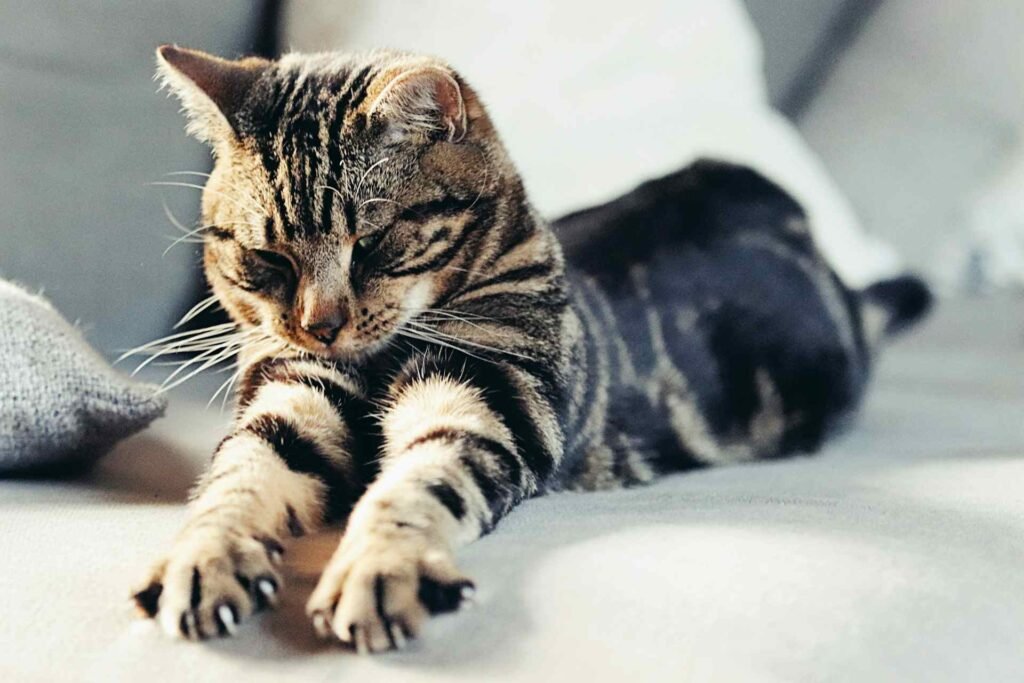
Your Protection Options: Three Approaches to Couch Defense
Before diving into specific recommendations, it’s important to understand that cat proof couch covers come in three distinct categories, each designed to address different scratching behaviors and protection needs.
Full Coverage Solutions wrap your entire couch like a protective second skin, offering comprehensive defense against scratches, spills, and pet hair. These scratch proof couch covers transform your furniture into a pet-friendly fortress while maintaining comfort for human occupants.
Targeted Protection Shields focus on high-risk areas where cats typically scratch, such as corners and armrests. These strategic defenders offer a more affordable approach while preserving your couch’s original appearance in untouched areas.
Scratch Mat Systems provide cats with an approved scratching surface directly on your furniture, redirecting their natural behaviors rather than blocking them entirely. These innovative solutions turn problem areas into acceptable scratching zones.
Why Your Couch Needs Protection
Understanding why cats scratch furniture helps you choose the most effective protection strategy. Cats don’t scratch your couch out of spite or rebellion. This natural behavior serves multiple purposes: maintaining claw health, marking territory through scent glands in their paws, stretching their muscles, and expressing emotions.
Your couch presents an irresistible scratching opportunity because of its texture, height, and stability. The fabric provides the perfect resistance for claw maintenance, while the armrests offer ideal stretching positions. Additionally, your scent on the furniture makes it an appealing territory marking location.
Modern cat resistant couch covers work by either providing an alternative texture that’s less appealing for scratching or creating a barrier that protects the underlying fabric. The key is finding a solution that satisfies your cat’s needs while preserving your furniture investment.
Many pet owners worry that protection methods will create an ongoing battle with their cats. However, most cats quickly adapt to properly chosen covers, especially when combined with strategic cat furniture placement of appropriate scratching alternatives nearby.
The benefits extend beyond scratch protection. Quality covers also guard against spills, reduce pet hair accumulation, and can extend your furniture’s lifespan significantly. Some covers even offer waterproof protection, making them valuable for households with multiple pets.
Our Top Recommendations: Three Proven Protection Strategies
After extensive research, we’ve identified three standout products representing each protection category. These recommendations balance effectiveness, durability, and value while addressing different household needs and budgets.
Full Coverage Champion: Deep Dream Cat-Scratch Resistant Couch Cover
The Deep Dream cover represents the gold standard in comprehensive furniture protection. This waterproof couch cover transforms your entire sofa into a pet-friendly zone without sacrificing comfort or style.
Strengths:
- Complete coverage including armrests, back, and cushions
- Waterproof protection against spills and accidents
- Anti-slip backing prevents shifting during active pet use
- Machine washable with easy pet hair removal
- Multiple size options accommodate various furniture dimensions
Considerations:
- Higher upfront investment compared to partial protection options
- May alter the original feel and appearance of your furniture
- Requires proper measuring to ensure optimal fit
This solution works exceptionally well for households with multiple pets or cats that scratch various couch areas. The waterproof feature provides additional peace of mind beyond scratch protection.
Targeted Defense Leader: FixZilla Anti Cat Scratch Furniture Protector
The FixZilla system offers strategic protection for households dealing with location-specific scratching behavior. This scratch resistant couch cover approach focuses protection where it’s needed most.
Strengths:
- Transparent design maintains original furniture appearance
- Easy installation with optional twist pin reinforcement
- Multi-piece set covers multiple problem areas
- Significantly more affordable than full coverage options
- Leaves no residue when removed
Considerations:
- Not suitable for leather, velvet, or microfiber furniture
- Requires identifying specific scratching locations
- Some cats may attempt to pull out twist pins
This option excels for cats with predictable scratching patterns, particularly those targeting corners and armrests. The transparent design makes it nearly invisible while providing robust protection.
Innovative Alternative: Cat Scratch Mat Protection System
The scratch mat approach represents a clever compromise between protection and feline satisfaction. Instead of blocking scratching behavior, these cat scratch resistant couch covers redirect it to approved surfaces.
Strengths:
- Provides approved scratching surface directly on furniture
- Trimmable design allows custom fitting
- Strong adhesive backing ensures secure placement
- Available in multiple colors to complement decor
- Satisfies cats’ natural scratching needs
Considerations:
- May not appeal to all cats initially
- Requires strategic placement for maximum effectiveness
- May alter the appearance of furniture in some spots
This innovative solution works particularly well for cats who resist traditional deterrent methods. By providing an acceptable scratching surface, it often reduces overall furniture damage while keeping cats satisfied.
Protection Comparison: Finding Your Perfect Match
| Feature | Full Coverage | Targeted Shields | Scratch Mats |
|---|---|---|---|
| Recommendation | See latest price on Amazon | See latest price on Amazon | See latest price on Amazon |
| Price Range | Higher | Budget-friendly | Moderate |
| Installation | Complete draping | Adhesive application | Peel and stick |
| Coverage Area | Entire couch | Specific zones | Customizable sections |
| Visibility | Changes appearance | Nearly invisible | Visible texture addition |
| Cat Adaptation | Usually quick | Varies by cat | May take time |
| Maintenance | Machine washable | Wipe clean | Replace when worn |
| Best For | Multi-pet homes | Targeted scratchers | Behavior redirection |
The choice between these approaches depends heavily on your specific situation. Households with multiple pets or extensive furniture use often benefit from full coverage solutions. Single-cat homes with predictable scratching patterns might find targeted protection more practical and economical.
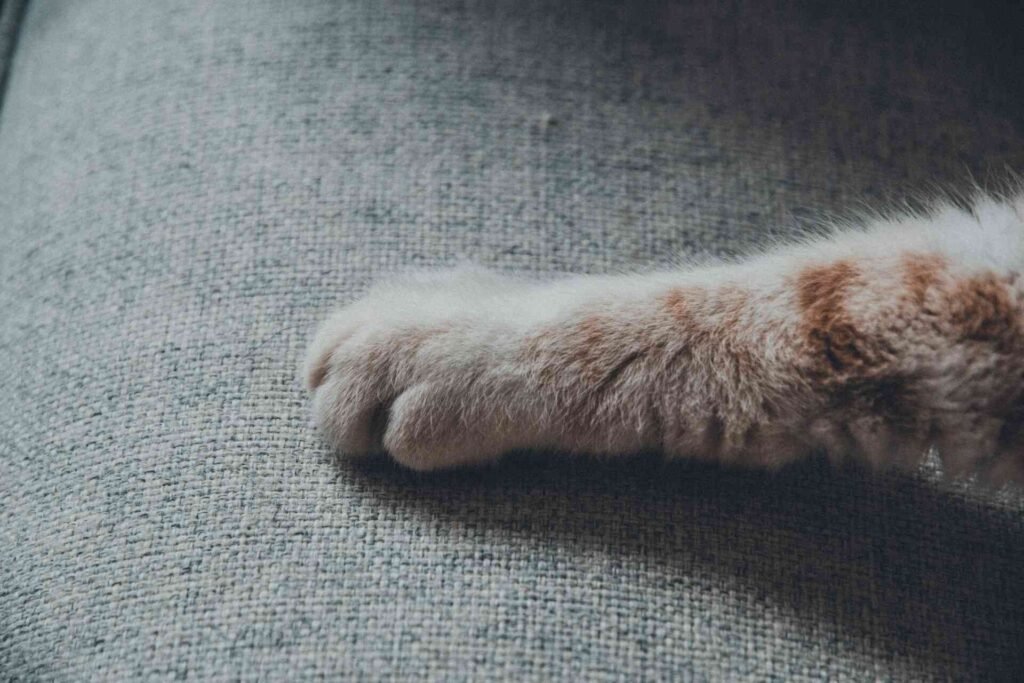
Material Matters: What Makes a Cover Truly Scratch Resistant
Not all scratch proof sofa covers are created equal. The most effective options combine specific material properties that resist claw damage while maintaining comfort and durability.
Polyester blends dominate the high-performance category because they offer excellent tear resistance while remaining soft enough for comfortable seating. The fiber structure naturally resists snagging, making it difficult for claws to catch and pull threads.
Microfiber options provide another excellent choice, offering smooth surfaces that many cats find less appealing for scratching. These materials also excel at resisting pet hair accumulation, making maintenance significantly easier.
Waterproof coatings add another layer of protection while addressing concerns beyond scratching. These treatments guard against spills, accidents, and moisture damage that can compromise furniture integrity over time.
Canvas and duck cloth materials offer maximum durability for households with particularly destructive scratchers. While these heavier fabrics may feel different from your original upholstery, they provide nearly indestructible protection against even the most determined claws.
Avoid materials like silk, linen, or loosely woven fabrics that can easily snag or tear. Similarly, leather-like surfaces might seem scratch-resistant but often show claw marks more readily than fabric alternatives.
The weave pattern also influences effectiveness. Tight weaves resist claw penetration better than loose, open patterns. Look for covers with reinforced stress points, particularly around armrests where scratching activity concentrates.
Installation Success: Getting Your Cover Right the First Time
Proper installation can make the difference between a cover that works beautifully and one that frustrates both you and your cat. Most protection failures stem from installation issues rather than product defects.
For full coverage solutions, accurate measuring is absolutely critical. Measure your couch dimensions carefully before ordering, including width, depth, and height. Don’t forget to account for armrest style and cushion thickness, as these factors affect fit significantly.
Pre-installation preparation sets you up for success. Remove existing pet hair and debris from your furniture, and consider giving your cat’s claws a trim beforehand. This simple maintenance routine reduces the likelihood of immediate damage attempts.
When applying adhesive shields, clean the application area thoroughly with appropriate cleaners. Any residue or pet hair can compromise adhesion, leading to lifting edges that cats will inevitably target. Allow cleaned surfaces to dry completely before application.
Test adhesion in an inconspicuous area first, especially on leather or specialty fabrics. Some adhesives may cause discoloration or texture changes that aren’t immediately apparent.
For covers with anti-slip features, ensure the backing contacts the furniture surface evenly. Wrinkles or air pockets can create movement that defeats the anti-slip design and frustrates your cat during use.
Consider the break-in period for any protection method. Most cats need a few days to adjust to changes in their environment. During this adjustment phase, provide extra attention and alternative scratching options to ease the transition.
Beyond Basic Protection: Advanced Tips for Couch Preservation
Successful furniture protection extends beyond simply applying covers. Creating a comprehensive strategy that addresses your cat’s needs while maintaining your furniture investment requires considering multiple factors.
Environmental enrichment plays a crucial role in reducing destructive scratching behavior. Cats often target furniture when they lack appropriate alternatives or feel stressed about their territory. Providing multiple scratching posts in strategic locations can significantly reduce couch-focused scratching.
The placement of alternative scratching surfaces matters more than many pet owners realize. Position scratching posts near sleeping areas, entryways, and wherever your cat already shows scratching preferences. Cats naturally scratch after waking up, so bedside scratching options often prove most effective.
Texture variety in scratching alternatives helps satisfy different scratching needs. Some cats prefer sisal rope, others favor cardboard, and many enjoy carpet-covered surfaces. Observing your cat’s preferences guides you toward the most appealing alternatives.
Regular claw maintenance reduces the damage potential from any scratching activity. Well-trimmed claws cause less fabric damage and reduce the likelihood of claws becoming caught in cover materials. This routine grooming also helps you monitor claw health and detect any issues early.
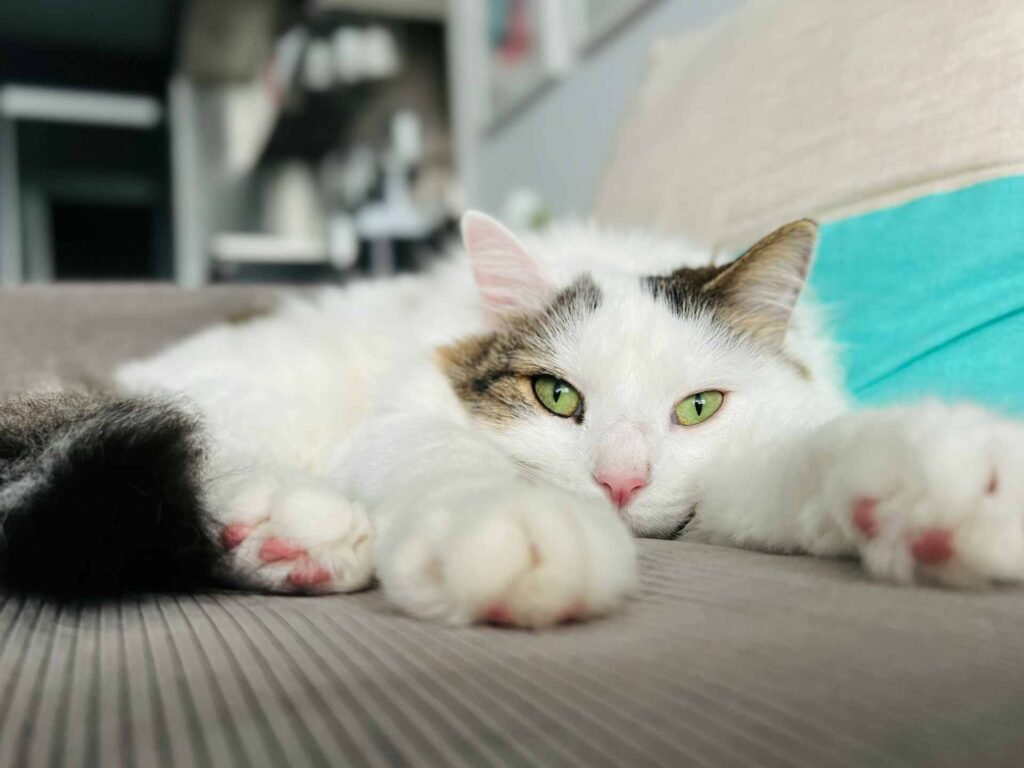
Stress management significantly impacts scratching behavior. Cats experiencing anxiety or territorial concerns often increase marking behaviors, including furniture scratching. Identifying and addressing stressors can reduce the intensity of protection measures needed.
Consider the timing of cover introduction. Avoid making changes during stressful periods like moves, new pet introductions, or household disruptions. Cats adapt more readily to furniture changes when their routine remains otherwise stable.
Maintenance and Longevity: Keeping Your Protection Effective
Even the highest quality cat resistant sofa covers require proper care to maintain their protective properties. Establishing good maintenance routines extends cover life while ensuring continued effectiveness.
Regular cleaning prevents the buildup of pet hair, dander, and odors that can make covers less appealing to humans while potentially attracting more feline attention. Most machine-washable covers benefit from weekly washing, especially in multi-pet households.
Use pet-safe detergents that won’t leave residues attractive to cats. Avoid fabric softeners, which can reduce the effectiveness of anti-slip backings and may create textures that encourage scratching behavior.
Air drying often proves gentler on cover materials than high-heat machine drying. This approach also prevents shrinkage that could compromise fit and protection coverage.
Inspect covers regularly for signs of wear, particularly around high-stress areas like armrests and corners. Early detection of damage allows for repairs or replacement before complete failure occurs.
For adhesive-based protections, monitor edges for lifting or curl development. Prompt attention to these issues prevents cats from working underneath shields and compromising the protected area.
Keep spare covering materials on hand for quick repairs or replacement. Having backup protection available prevents gaps in coverage during cleaning or replacement periods.
Document what works for your specific situation. Note your cat’s responses to different materials and approaches, as this information proves valuable when updating or replacing protection methods.
Troubleshooting Common Cover Challenges
Even well-chosen protection sometimes faces unexpected obstacles. Understanding common issues and their solutions helps you maintain effective furniture protection over time.
Cover slipping represents the most frequent complaint about furniture protection. This usually indicates either improper sizing, inadequate anti-slip features, or pet behavior that overwhelms the cover’s staying power. Solutions include adding furniture straps, using grip-enhancing products underneath, or upgrading to covers with superior anti-slip technology.
Some cats actively work to remove protection, viewing it as an environmental challenge rather than a deterrent. Cats displaying this behavior often need additional mental stimulation and alternative outlets for their problem-solving energy.
Odor retention in covers can attract continued scratching attention or create unpleasant living conditions. This issue typically stems from inadequate cleaning frequency, using inappropriate detergents, or cover materials that naturally retain odors. Switching to antimicrobial covers or adjusting cleaning routines usually resolves these problems.
Texture rejection occurs when cats find cover materials uncomfortable for normal furniture use, leading them to avoid the protected furniture entirely. While this stops scratching, it may not align with your household’s furniture use needs. Experimenting with different cover textures often reveals acceptable compromises.
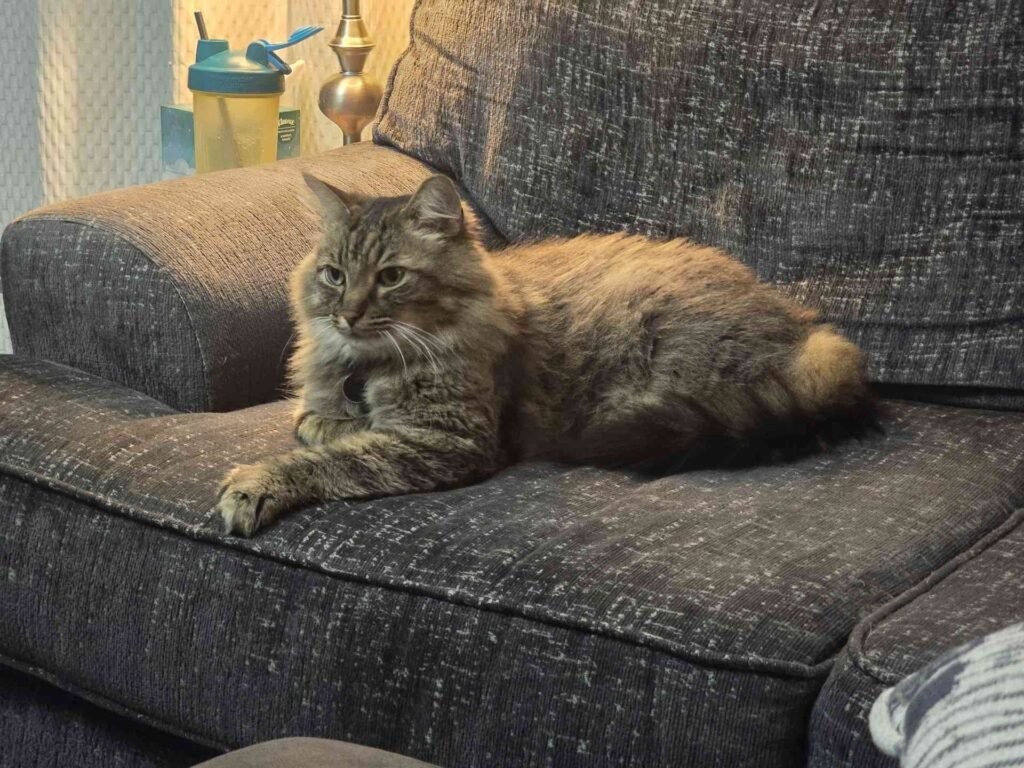
Color matching challenges can make protection obvious and aesthetically displeasing. Many manufacturers offer multiple color options, and some covers can be dyed to better match existing decor. Professional upholstery services sometimes provide custom cover solutions for unique matching needs.
Size mismatches create gaps in protection that cats inevitably exploit. Rather than accepting poor fit, consider covers designed for custom sizing or consult professional upholsterers for tailored solutions.
Cost-Effective Protection: Budget-Friendly Strategies
Protecting your furniture doesn’t require breaking your household budget. Several approaches provide excellent protection while keeping costs manageable over time.
Targeted protection often delivers the best value for households with predictable scratching patterns. Why cover an entire couch when your cat only targets specific areas? Strategic placement of shields or mats can provide comprehensive protection at a fraction of full-cover costs.
DIY solutions work well for creative pet owners willing to invest time instead of money. Heavy-duty fabrics from craft stores can be fashioned into custom covers, while carpet samples can create effective scratching mats for problem areas.
Gradual implementation spreads costs over time while allowing you to test effectiveness before full commitment. Start with the most damaged areas, then expand protection as budget allows and success warrants.
Combination approaches often provide better value than single-method protection. Using inexpensive deterrents alongside moderate-cost covers can deliver premium-level protection at mid-range prices.
Consider long-term costs when evaluating options. Higher upfront investments in quality covers often prove more economical than repeatedly replacing cheaper alternatives that fail quickly.
Watch for seasonal sales and bulk purchasing opportunities. Many online retailers offer significant discounts during off-peak periods, and buying multiple items together often triggers additional savings.
Health and Safety Considerations
Pet safety must remain the top priority when selecting and using furniture protection. Some materials and installation methods can pose risks to curious cats who investigate new additions to their environment.
Avoid covers with small removable parts that could present choking hazards. Twist pins, snaps, and decorative elements should be secured properly and monitored regularly for loosening or damage.
Chemical sensitivities affect some cats, making material selection crucial for sensitive pets. Look for covers labeled as hypoallergenic or made from natural fibers if your cat shows sensitivity to synthetic materials.
Proper ventilation around covered furniture prevents moisture buildup that could create mold or mildew issues. This consideration becomes particularly important with waterproof covers that may trap humidity.
Sharp edges on protective shields require careful attention during installation. File or sand any rough edges that could cause injury during normal pet or human interaction with the furniture.
Monitor your cat’s behavior changes after installing protection. Increased hiding, reduced furniture use, or signs of stress may indicate that the chosen protection method isn’t suitable for your particular pet.
Emergency removal procedures should be understood before installation. In rare cases, cats may become caught or tangled in covers, making quick removal knowledge essential for safety.
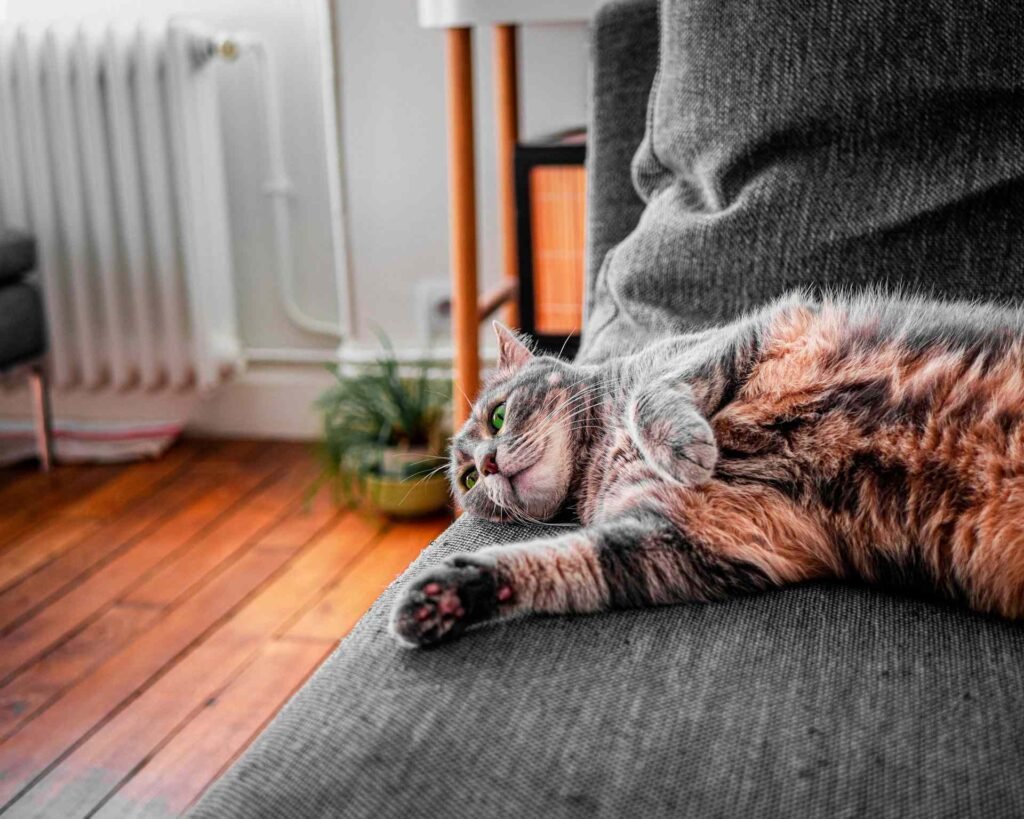
Frequently Asked Questions
How long does it take for cats to adjust to new furniture covers?
Most cats adapt to well-chosen furniture protection within 3-7 days. The adjustment period varies based on the cat’s personality, the extent of change to their environment, and whether alternative scratching options are provided. Gradual introduction and positive reinforcement can speed acceptance significantly.
Can furniture covers damage my upholstery when removed?
Quality covers designed for furniture protection should not damage upholstery when properly applied and removed. However, covers with strong adhesives may leave residues on certain fabric types, particularly delicate or specialty materials. Always test adhesive products in inconspicuous areas first and follow manufacturer removal instructions carefully.
Will scratching protection covers affect furniture comfort for humans?
Modern furniture protection is designed to maintain comfort while providing defense against pet damage. Full coverage options may slightly alter the feel of your furniture, but most users adapt quickly. Targeted protection methods like clear shields typically don’t affect comfort at all since they’re placed in areas where humans don’t typically rest.
How often should furniture covers be washed or replaced?
Machine-washable covers benefit from weekly washing in active pet households, though this frequency can be reduced based on actual soil and odor accumulation. Replace covers when they show significant wear, lose their protective properties, or no longer provide adequate coverage. Quality covers typically last 1-3 years with proper care.
Are there furniture types that can’t be effectively protected with covers?
Certain furniture styles present protection challenges, including recliners with complex mechanisms, sectionals with unusual configurations, and antique pieces with delicate fabrics. However, creative solutions exist for most situations, including custom covers, strategic partial protection, and alternative deterrent methods.
Do cats eventually stop trying to scratch protected furniture?
Many cats reduce their scratching attempts on protected furniture over time, especially when provided with appealing alternatives nearby. However, some persistent scratchers may continue testing protection indefinitely. The key is choosing protection that can withstand long-term testing while gradually redirecting behavior toward appropriate scratching surfaces.
Can multiple protection methods be used together safely?
Combining protection methods can enhance effectiveness, but compatibility must be considered. For example, adhesive shields can be used alongside targeted scratch mats in different areas, but combining full covers with adhesive products may create installation challenges. Always ensure that combined methods don’t create safety hazards or installation conflicts.
Protecting Your Investment While Keeping Everyone Happy
Finding the perfect scratch resistant sofa cover doesn’t have to feel like solving an impossible puzzle. Whether you choose comprehensive coverage, strategic protection, or innovative redirection methods, success comes from understanding both your furniture protection needs and your cat’s natural behaviors.
The investment in quality furniture protection pays dividends far beyond preventing scratch damage. You’ll enjoy reduced stress about your furniture’s condition, easier maintenance routines, and the peace of mind that comes with knowing your beloved couch can withstand whatever your feline family members dish out.
Your couch has served as nap central, Netflix headquarters, and apparently, premium scratching real estate. With the right protection in place, it can continue serving all these purposes for years to come, keeping both you and your cat perfectly content with the arrangement. After all, the best furniture protection is the kind that works so well, everyone forgets it’s even there.
Looking for more? Explore our Cat Furniture section for more posts like this, visit the Blog for fun and insightful reads, or browse our full Cat Category for everything feline-related, from care to comfort.
Disclaimer: This article is for informational purposes only and does not substitute for professional veterinary advice. Always consult your veterinarian for diagnosis and treatment tailored to your cat’s individual needs. Please verify current product information directly on the retailer’s site before purchasing.
Check out our most recent articles!
- Cats and Snow: Why Some Love It and Others Don’tSnow isn’t just uncomfortable for many cats, it’s a complete sensory overload. From cold paw pads to wet fur and changed landscapes, winter challenges feline comfort in unexpected ways. Learn how to recognize stress signals and create cozy alternatives for snow-averse cats.
- Christmas Names for Cats: From Classic to Creative Holiday IdeasNaming your holiday cat goes beyond festive fun. Discover why Christmas-inspired names age beautifully, spark instant connections with fellow pet lovers, and capture the warmth cats bring to our homes during the most magical season of the year.
- How to Keep Your Cat From Drinking Christmas Tree WaterYour cat’s obsession with Christmas tree water isn’t just annoying, it’s genuinely dangerous. From harmful bacteria to toxic additives, that festive reservoir poses real health risks. Discover practical solutions that protect your pet without sacrificing holiday cheer.
- Best Cat Toys for Christmas: The Ultimate Guide to Holiday JoyNot all Christmas gifts end up under the tree, some get batted across the floor at 3 AM. Explore the wonderful world of holiday cat toys that match your feline’s personality, from plush companions for cuddlers to high-tech options for the eternally energetic.
- Are Fake Christmas Trees Safe for Cats? A Holiday Safety GuideThat beautiful Christmas tree might look festive to you, but to your cat, it’s an irresistible climbing gym with built-in toys. Find out whether artificial trees are truly safer for cats and discover the hidden dangers lurking in your holiday decorations.
- The Best Christmas Gifts for Cats That’ll Actually Get Used (Not Ignored)Not all Christmas gifts land on the nice list with our feline friends. Discover which presents actually spark joy in cats and which ones end up gathering dust under the couch by New Year’s Day.
- Do Cats Eat Less in Winter? How Cold Weather Affects Your Cat’s AppetiteWinter brings more than just cold weather, it can completely change your cat’s eating habits. From bored indoor cats to outdoor ferals fighting to survive, discover what’s really driving those appetite changes and how to respond appropriately.
- Are Humidifiers Good for Cats? A Complete Safety & Health GuideNot all humidifiers are cat-safe, and some common practices could be toxic. Learn why cool mist beats warm mist, why essential oils are dangerous for felines, and how proper humidity levels between 30-50% support your cat’s breathing and coat health.
- How to Protect Leather Furniture From Cats (Without Losing Your Mind)Leather furniture and cat claws seem like natural enemies, but they don’t have to be. Learn why your cat is drawn to that expensive couch in the first place, and how simple redirects can save your furniture while keeping your cat’s natural behaviors satisfied.
- The Best Material for Cat Bowls: Protect Your Cat from BacteriaStainless steel, ceramic, or plastic, which material keeps your cat healthiest? We break down the science behind cat bowl materials, revealing why some harbor bacteria and others last decades without compromising your feline’s wellbeing.










